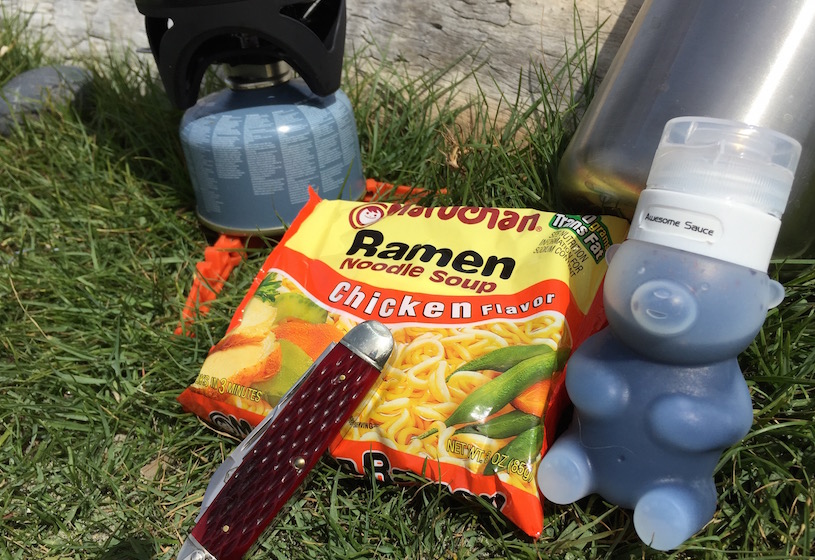Ramen in Japan traces its history to the beginning of the 20th century and the use of Chinese style noodles in broth made from chicken, pork or fish. Originally a meal for workers, it was served from carts or small stalls. By the 1950’s the influx of large amounts of American wheat and the need for inexpensive meals in post war Japan lead to ever increasing regional varieties of ramen served both hot and cold using a mix of traditional ingredients and those that were on hand. In the past decade there has been a ramen renaissance as chefs from around the world have elevated ramen, using top ingredients and developing sophisticated flavor profiles while opening new restaurants far and wide.
Instant ramen may be the scourge of the gourmet as much as it is loved by dorm rats everywhere, but it also makes for a convenient and satisfying meal on the trail.
In 1958 Momofuku Ando invented the process of producing instant ramen noodles by flash frying them. This process partially cooks the noodles and dehydrates them giving them a long shelf life and easy preparation by adding hot water. Instant ramen may be the scourge of the gourmet as much as it is loved by dorm rats everywhere, but it also makes for a convenient and satisfying meal on the trail. Even if I’ve packed plenty of food and planned my meals, I always carry an extra package of instant ramen in my pack when camping. You never know when you may be just too tired after a day of hiking or if the weather turns bad, you may not be able or willing to rustle up a satisfying meal for yourself. With a Jet Boil, some water and a pack of instant ramen you can be eating hot food in just a few minutes. With just a few extra ingredients you can make that hot food of convenience into a delicious meal.
Instant ramen make a great base which just needs a few added extras to make it even more flavorful. The easiest first step to fortifying your ramen is adding some fresh vegetables- this will add flavor, texture and nutrients to your meal. There are plenty of vegetables you can bring that will last several days on the trail without refrigeration such as: sugar snap peas, snow peas, carrots, onion, green onions, garlic, limes, and chili peppers. These will add variety to your soup and can also be used in other meals during your trip.
Secondly you will want to add more flavor to your broth. If you want to discard the sodium laced flavor packet that comes with instant ramen you can add soy sauce, sriracha sauce, vinegar, sesame oil or grated ginger. Mixing these ingredients before hand and putting them in a small squeeze bottle makes for a very flavorful addition that is ready to go. To obtain deeper flavors you can also buy individually packaged low sodium chicken broth packets at Trader Joe’s to serve as your soup base.
If you wish to add protein to your meal you can still eat fresh meat that you have marinated and frozen, but you are going to have to consume it on your first day. Obviously if you are overlanding and have access to a cooler and ice that range can be extended. If you don’t have access to a cooler another option is baked or smoked tofu which should keep 1-2 days if temperatures aren’t too extreme. Another way to get more protein is freeze dried meat. We like Honeyville Farms as their products usually use the least amount of ingredients and fillers like cellulose powder.
Instant ramen noodles also works as an easy to prepare and packable pasta substitute in the field. You can use powdered ingredients to make mac and cheese style ramen, spaghetti or even add a can of stew or chili to your noodles to make it a more filling and hearty meal. So let your imagination and taste buds run wild and see what you can come up with for the next time you go camping. Just don’t add a can of tuna, I had a roommate that did that and that’s just wrong. (plus it probably attracts bears)
